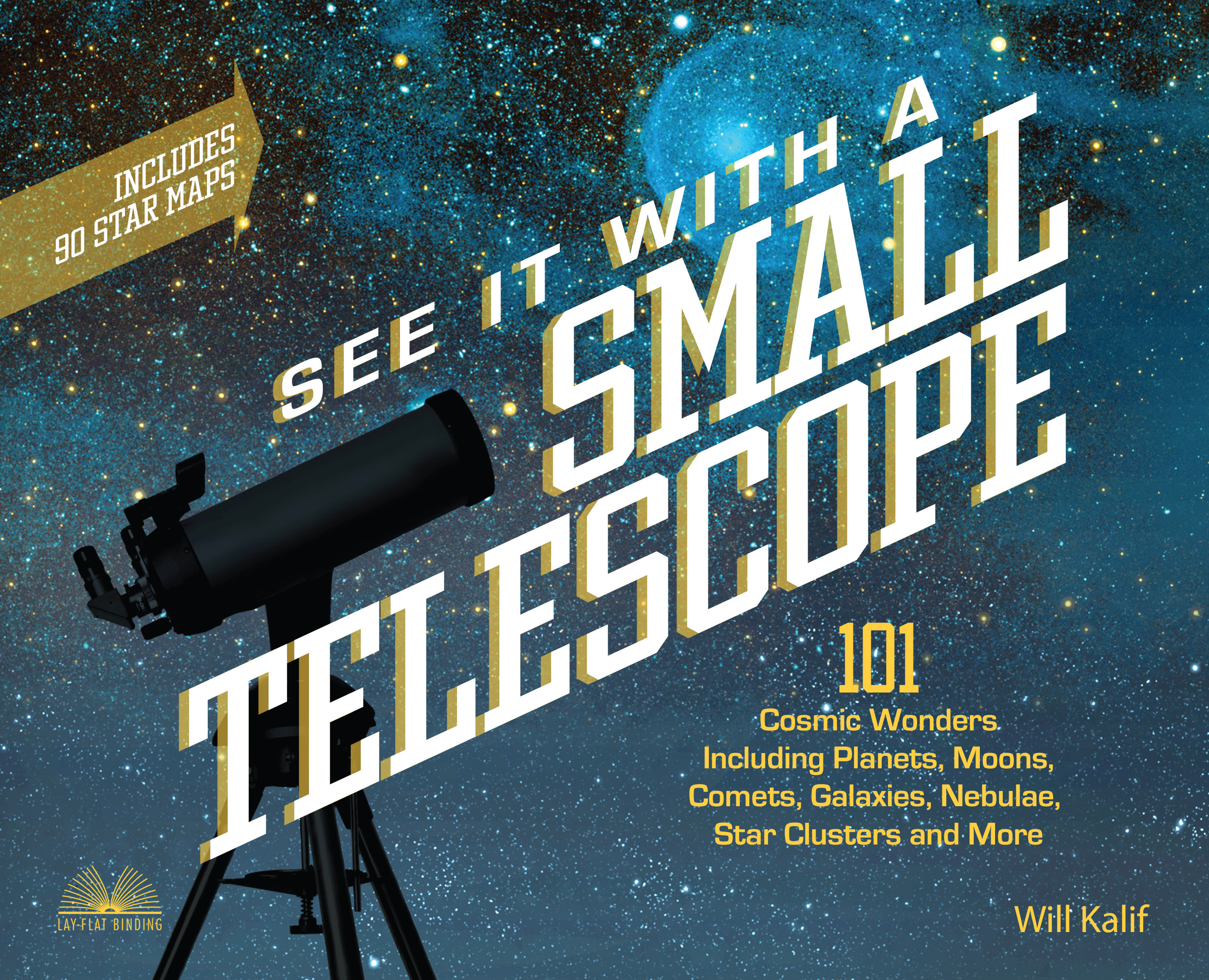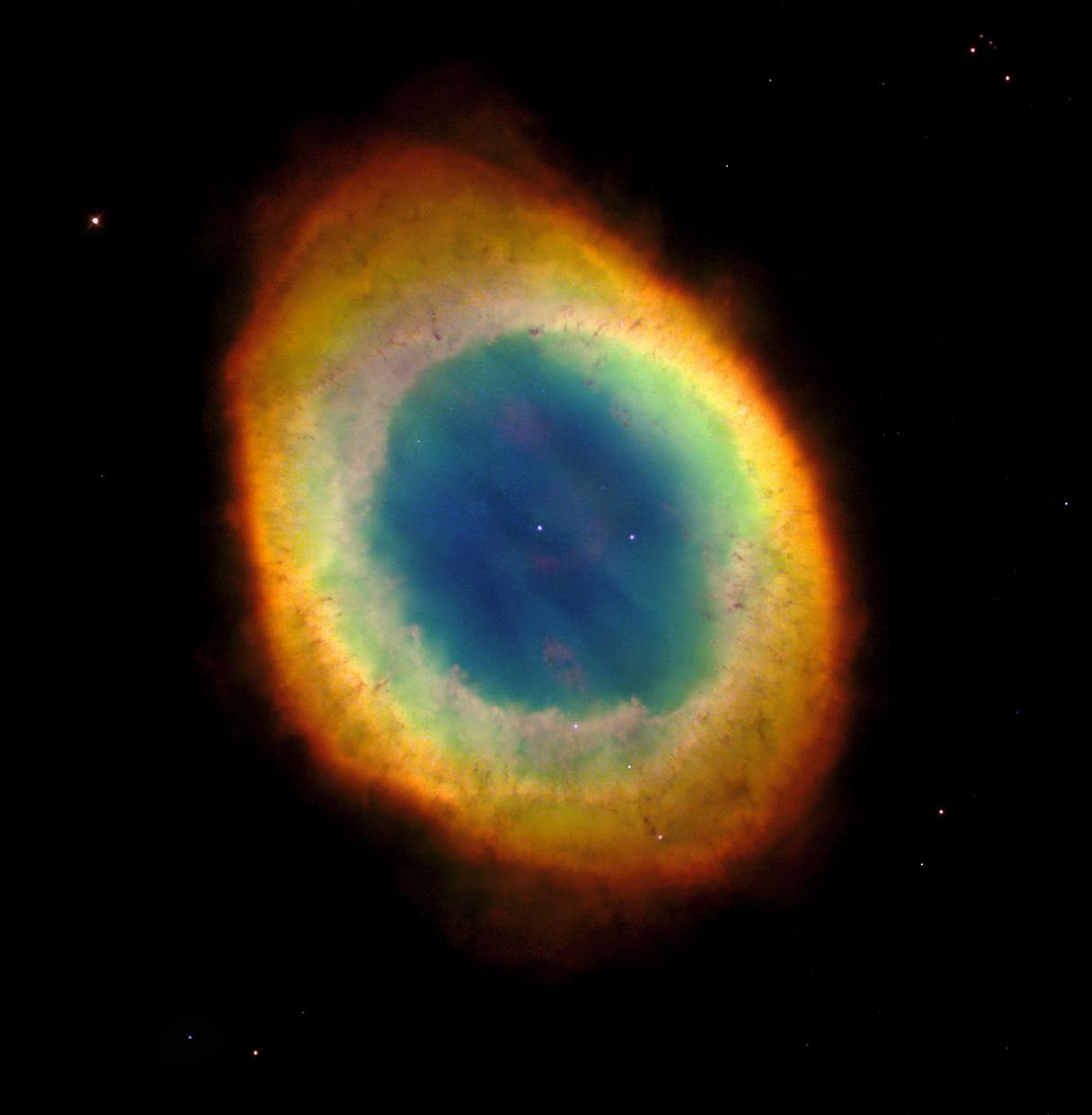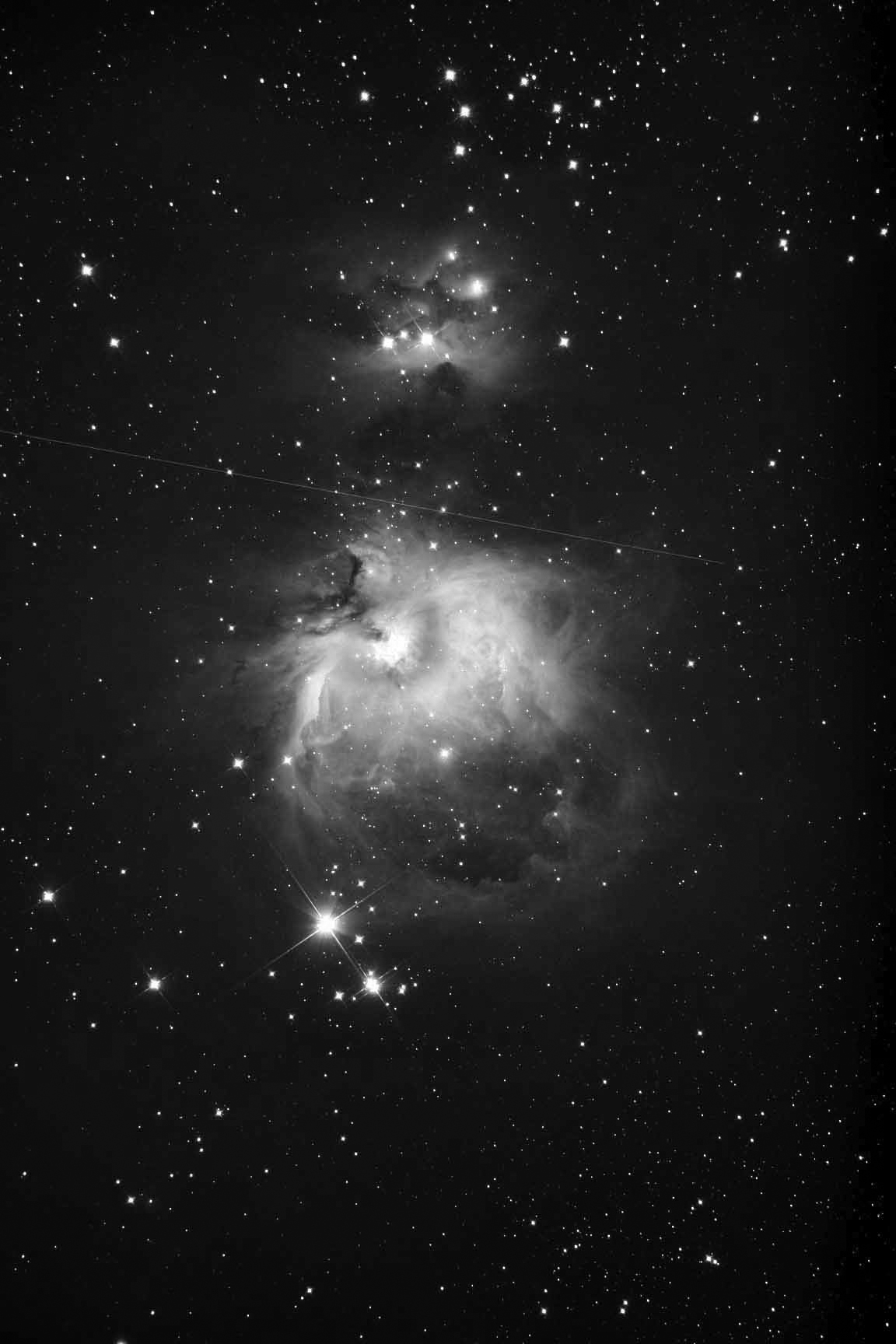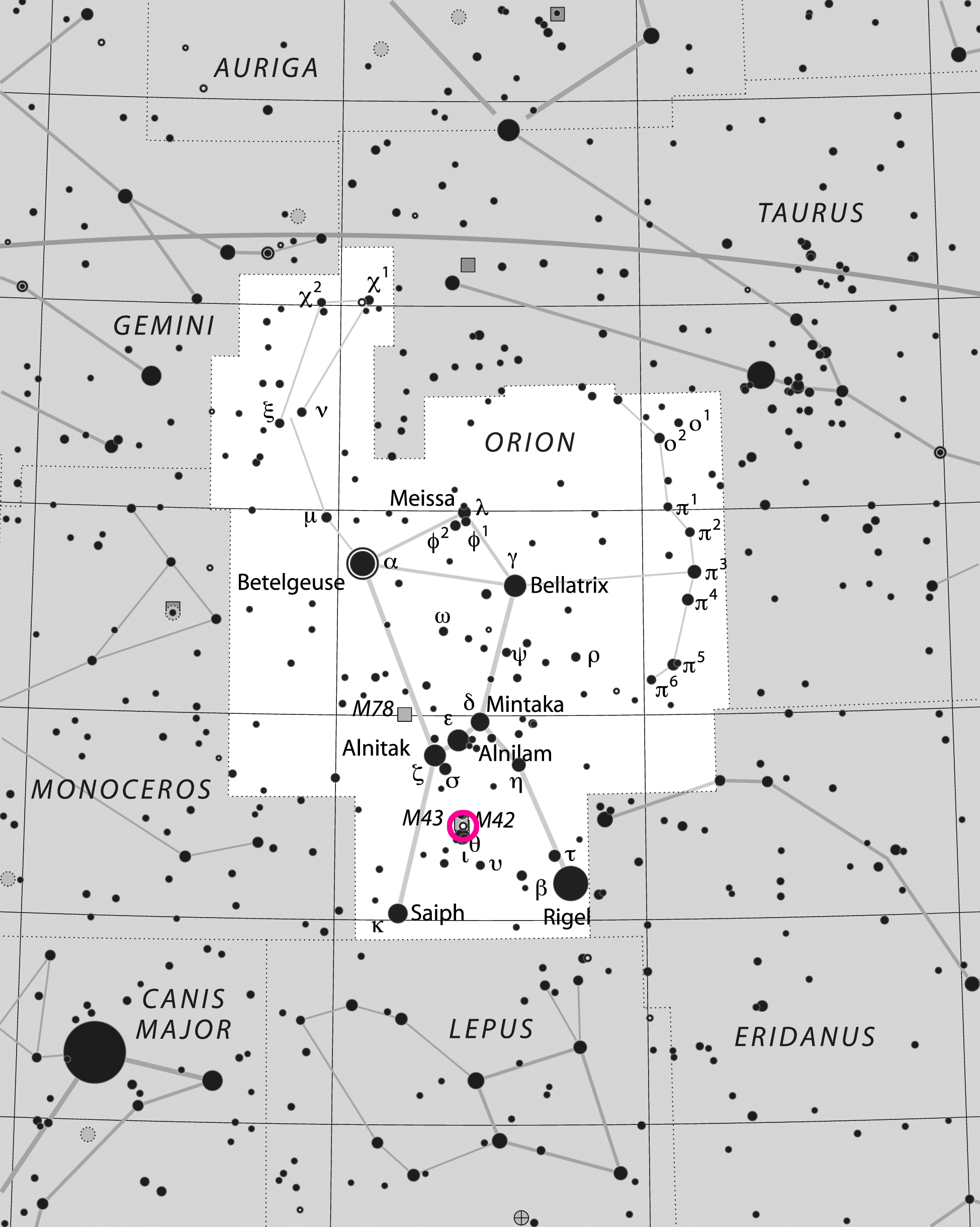Exploring the Orion Nebula: Excerpt from 'See It With A Small Telescope' (US 2018)
Will Kalif is a writer, webmaster, and an avid telescope enthusiast currently living in New England. He has worked a full career in a variety of fields including robotics, computers, and electronics. He has been passionate about telescopes and the wonders of the night skyever since he received his first telescope as a teenager. You can learn more about telescopes, telescope making, and astronomy by visiting his website at www.telescopenerd.com. Below is an excerpt from his new book, "See It With A Small Telescope" (Ulysses Press, 2018), which discusses how to get started with your telescope and how to pinpoint the Orion Nebula. Read our review of the book here.

We have all browsed the internet and seen many pictures of the planets, galaxies, and the other wonders in the night sky. The Hubble Space Telescope has changed our perspective on the universe, and the images it has taken have set our telescope expectations high. But, you should set your expectations differently when using a small telescope. Your small telescope will not provide you with National Geographic ready images, but what you do see will still be remarkable and awe-inspiring. Consider your time with your telescope as more of a treasure-hunting session, and you will likely be pleasantly surprised by how many celestial objects you can see in the night sky.
If you are very new to using a telescope at night, you might not want to jump right into observing the night sky, though it is quite okay to do that. That would make you an adventurous type of person. And adventurous people have been admiring the stars for centuries. You are, however, going to be hunting for objects that are extremely faint, whose light has taken thousands or even millions of years to arrive at this planet. So there are some things you can do to maximize your viewing potential and get the ultimate ability out of your telescope. For example, it is a good idea to set up your telescope outside an hour before you plan on using it, because its optics — lenses, mirrors, and other viewing mechanisms — need time to adjust to the changes in temperature and humidity. Doing this will make a big difference in how the telescope performs for you. [Astronomy Gear Guide: Tools, Tips and Tricks to Stargaze Like a Boss]
I have included several pictures for reference, some taken through a small telescope that should give you an idea of what to look for and expect. Note that your view may be different when you look through your telescope; there is a lot of variation in what you will see when you look at an object, depending on the size and quality of your telescope, how clear the sky is on that night, and how much light pollution your area of the country has.
Don't Give Up!
I have been an amateur astronomer for several decades. It has been a passion since my teenage years, when I received my first small telescope as a Christmas present. Over the years, I have introduced many people to the wonders of the night sky. But, I have also seen how disorienting the night sky can be at first. It takes a little bit of time and patience to get familiar with what it has to offer.
I encourage you to have a little patience and spend a few nights with your telescope. Once you identify your first few constellations and learn the names of some of the brighter stars, you will quickly get a knack for it, and in no time you will easily recognize many more constellations. From there, you will be able to star hop from one amazing celestial object to another. If you dedicate a few hours to stargazing over the course of a few nights, chances are good that you will become a lifelong lover and observer of the night sky, just as I am.
Using Star Charts
"See it With a Small Telescope" uses a uniform set of public domain star constellation charts that were created by a collaboration between the International Astronomical Union and Sky & Telescope Magazine. The charts were modified to point out certain objects or features as they are being discussed.
Get the Space.com Newsletter
Breaking space news, the latest updates on rocket launches, skywatching events and more!
There are a few things you should know when reading a star chart. First, the stars are of different magnitudes, which are represented on the charts as different-sized dots. The larger the dot, the brighter the star.
Second, the orientation of star charts can be confusing. You are viewing the charts on a screen, all in one direction. But the night sky is perpetually rotating. Every hour of every night, the orientation of the stars and constellations changes because the Earth is at a different stage of its rotation. When stargazing, you can compensate for the changing orientation by finding the major stars or constellations on the chart, and adjusting accordingly so that the chart matches the sky.
Now, onto the fun bit- let's talk about nebulae and how to see one with your telescope! [The Fabulous Lives of Nebulas]

NEBULAE
Our galaxy is ever-changing, although the changes happen at a slow pace in terms of human perception. Over the course of millions of years, stars are born, go through a life cycle, and die.
In this process, a lot of gaseous matter is formed and reformed. And this matter can be concentrated into something called nebulae. Through the telescope, these nebulae appear as fluffy, cotton-ball-like structures in a variety of shapes and colors.
The Types of Nebulae
Nebulae are categorized into four major types: diffuse, planetary, dark, and supernovae remnants. You will also look at a diffuse nebula that is currently birthing stars. In this type of nebula, matter is drawn together to incubate and bring to life new stars. The Orion Nebula is a good example of this.
Diffuse Nebulae. The most common type, a diffuse nebula presents a light and wispy cloud-like structure without a well-defined shape, almost as if its ever-lightening borders just extend out forever. You can see diffuse nebulae because they either emit their own light (emission nebulae) or they reflect light from nearby stars (reflection nebulae). Diffuse nebulae are also the birthplace of stars. In diffuse nebulae, the gases are being slowly pulled together by gravitational forces. Over time, this matter forms into a star. Some nebulae that we see now have newly formed stars and some of the nebulae we see now have not yet formed stars.
Planetary Nebulae. A planetary nebula, which often looks like a donut, is very different from a diffuse nebula. They are formed when a nova, or tremendous explosion of a star, occurs, which creates an even shell of matter that extends out in space from the remains of the star. Early astronomers couldn't resolve them well with their telescopes, so they called them planetary nebulae because they had width and were well defined, just like a planet.
Dark Nebulae. This type of nebula is very similar in shape and structure to diffuse nebulae, with the exception that they don't emit or reflect any light. This causes them to block the light from objects behind them, so they appear to be just a dark area, but are often very rich and rewarding to observe.
Supernova Remnant Nebulae. Many nebulae are the result of a star experiencing a nova. But, on rare occasions, a supernova will occur, which is a violent explosion within a star that has much more force than a nova. Rather than a uniform expansion of matter into space like with a planetary nebula, supernova remnant nebulae appear in erratic and dramatic shapes. The Crab Nebula is a good example of this. [Seeing the Treasures of Messier's List with Mobile Astronomy Apps]

How to find the Orion Nebula
Locate the constellation Orion. Find Orion's belt, then find the three dimmer stars near the belt that make up Orion's sword. In the middle of the sword, you will find the nebula.
40. The Orion Nebula (M42)
Object type: Diffuse emission nebula
Constellation: Orion
Apparent magnitude: +4
Coordinates: 05h 35m 17.3s, -05° 23' 28"
Season: December through March; best in January
Difficulty: Easy

This is one of the best sights among all the nebulae. It is relatively easy to find because of its brightness and its location among the stars of Orion.
If you are using a small telescope, you will not see the Orion Nebula as nicely as I have shown in the circular telescope view here, but I just couldn't resist giving you a nice picture of it. It is simply too beautiful. Generally, it will reveal itself with a little bit of detail and no color. It will look like a cotton ball that has been pulled and teased a bit.
In this cloudy formation, large sections are being pulled together by gravity. These areas are in various stages of star and planetary formation. The nebulae in which this process occurs are referred to as stellar nurseries.
Don't Let Your Telescope Collect Dust!
Over the course of forty years of stargazing, I have noticed a pattern. People love astronomy and are very curious about it, so to feed the curiosity, many will buy a telescope. But then, something happens! They take it out at night, give it a try, get a bit confused, can't figure out the star charts, and well... before they know it, the telescope is in the garage collecting dust. My work is all about changing that experience.
My hope is that with guidance and an adventurous spirit, you can use your telescope to its full capacity and be rewarded with a rich stargazing experience. May you enjoy a sense of awe and wonder, just like I have gotten many times with my telescope.
Adapted from "See It with a Small Telescope: 101 Cosmic Wonders Including Planets, Moons, Comets, Galaxies, Nebulae, Star Clusters and More" by Will Kalif © Ulysses Press 2017 Available wherever books are sold.
Follow us @Spacedotcom, Facebook and Google+. Original article on Space.com.
Join our Space Forums to keep talking space on the latest missions, night sky and more! And if you have a news tip, correction or comment, let us know at: community@space.com.









